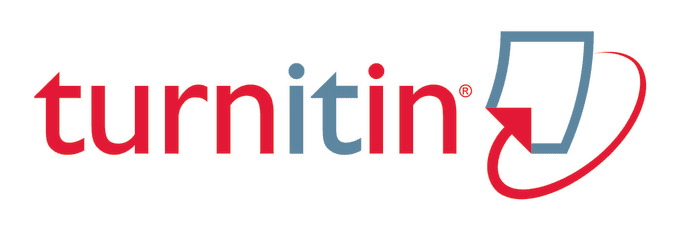Peran Komunikasi Internal dalam Meningkatkan Kinerja Karyawan: Studi pada Perusahaan Rintisan di Era Hybrid Working
DOI:
https://doi.org/10.71251/Keywords:
internal communication, employee performance, startup, hybrid working, digital communicationAbstract
The shift in work patterns due to the COVID-19 pandemic has accelerated the adoption of hybrid working systems across various sectors, including startup companies. In this context, internal communication plays a strategic role in maintaining productivity, employee engagement, and achieving organizational goals. This study aims to analyze how internal communication practices improve employee performance in startups implementing hybrid working models in Cianjur Regency. A qualitative approach was employed through in-depth interviews with employees and internal communication managers from selected tech and creative startups in the area. The findings reveal that the effectiveness of internal communication is significantly influenced by three key factors: consistency of information flow, adaptation to digital communication media, and two-way engagement between management and staff. The study also highlights that communication barriers—such as information overload and cross-platform miscommunication—may reduce work motivation if not managed through proper systems. Therefore, startups need to build a flexible yet structured communication ecosystem to maintain optimal performance in the hybrid working era. This study contributes to a better understanding of internal communication dynamics within a new working framework and recommends strengthening communication roles in human resource management.
References
Ahmadin, A., Pinem, D., Bahtiar, D., Hanika, I. M., Sofyan, H., & Jejen, A. (2023). Faktor-Faktor Yang Mempengaruhi Keputusan Investasi ESG (Environmental, Social, And Governance). Innovative: Journal Of Social Science Research, 3(5), 9956-9970.
Bakker, A. B., & Demerouti, E. (2007). The Job Demands‐Resources model: State of the art. *Journal of Managerial Psychology*, *22*(3), 309–328. [https://doi.org/10.1108/02683940710733115](https://doi.org/10.1108/02683940710733115)
Bahtiar, D., Sulaeman, P., & Aditya, D. (2023). Pemulihan usaha umkm pasca gempa cianjur: analisis strategi dan modal sosial. Jurnal Minfo Polgan, 12(2), 2301-2310.
Blank, S. (2013). *The Four Steps to the Epiphany: Successful Strategies for Products That Win*. K&S Ranch.
Bartsch, S., Weber, E., Büttgen, M., & Huber, A. (2021). Leadership matters in crisis-induced digital transformation: How to lead service employees effectively during the COVID-19 pandemic. *Journal of Service Management*, *32*(1), 71–85. [https://doi.org/10.1108/JOSM-05-2020-0150](https://doi.org/10.1108/JOSM-05-2020-0150)
Brock, D. M., & Steiner, M. (2009). Start-up strategies in emerging markets. *Journal of International Entrepreneurship*, *7*(3), 231–251. [https://doi.org/10.1007/s10843-009-0041-1](https://doi.org/10.1007/s10843-009-0041-1)
Bahtiar, D., & Rianti, G. (2021). Analisis Faktor-Faktor Pelatihan Tentang Kewirausahaan Kepada Pelaku Usaha Mikro Kecil Menengah di Pusat Layanan Usaha Terpadu Koperasi Usaha Mikro Kecil Menengah Kabupaten Cianjur. Jurnal Ilmu Manajemen Retail Universitas Muhammadiyah Sukabumi, 2(1), 1-6.Entman, R. M. (1993). Framing: Toward clarification of a fractured paradigm. Journal of Communication, 43(4), 51-58.
Creswell, J. W., & Poth, C. N. (2018). *Qualitative Inquiry and Research Design: Choosing Among Five Approaches* (4th ed.). SAGE Publications.
Daft, R. L., & Lengel, R. H. (1986). Organizational information requirements, media richness and structural design. *Management Science*, *32*(5), 554–571.
Karanges, E. R., Beatson, A., Johnston, K., & Lings, I. (2015). The influence of internal communication on employee engagement: A pilot study. *Public Relations Review*, *41*(1), 129–131. [https://doi.org/10.1016/j.pubrev.2014.12.003](https://doi.org/10.1016/j.pubrev.2014.12.003)
Katz, D., & Kahn, R. L. (1978). *The Social Psychology of Organizations* (2nd ed.). Wiley.
Mazzei, A. (2010). Promoting active communication behaviours through internal communication. *Corporate Communications: An International Journal*, *15*(3), 221–234. [https://doi.org/10.1108/13563281011068137](https://doi.org/10.1108/13563281011068137)
Karanges, E. R., Beatson, A., Johnston, K., & Lings, I. (2015). The influence of internal communication on employee engagement: A pilot study. *Public Relations Review*, *41*(1), 129–131. [https://doi.org/10.1016/j.pubrev.2014.12.003](https://doi.org/10.1016/j.pubrev.2014.12.003)
Marlina, N., Bahtiar, D., & Nurlaela, R. (2022). Analisis Keputusan Pembelian Barang-Barang Pertanian di Aplikasi Klik Indomaret (Studi kasus konsumen di Cianjur). Jurnal Administrasi Bisnis (JUBIS), 2(2), 127-138.
Men, L. R., & Yue, C. A. (2019). Creating a positive emotional culture: Effect of internal communication and impact on employee supportive behaviors. *Public Relations Review*, *45*(3), 101764. [https://doi.org/10.1016/j.pubrev.2019.03.001](https://doi.org/10.1016/j.pubrev.2019.03.001)
Lincoln, Y. S., & Guba, E. G. (1985). *Naturalistic Inquiry*. SAGE Publications.
Miles, M. B., Huberman, A. M., & Saldaña, J. (2014). *Qualitative Data Analysis: A Methods Sourcebook* (3rd ed.). SAGE Publications.
Patton, M. Q. (2015). *Qualitative Research and Evaluation Methods* (4th ed.). SAGE Publications.
Waizenegger, L., McKenna, B., Cai, W., & Bendz, T. (2020). An affordance perspective of team collaboration and enforced working from home during COVID-19. *European Journal of Information Systems*, *29*(4), 429–442. [https://doi.org/10.1080/0960085X.2020.1800417](https://doi.org/10.1080/0960085X.2020.1800417)
Robbins, S. P., & Judge, T. A. (2019). *Organizational Behavior* (18th ed.). Pearson.
Wang, B., Liu, Y., Qian, J., & Parker, S. K. (2021). Achieving effective remote working during the COVID-19 pandemic: A work design perspective. *Applied Psychology*, *70*(1), 16–59. [https://doi.org/10.1111/apps.12290](https://doi.org/10.1111/apps.12290)
Welch, M., & Jackson, P. R. (2007). Rethinking internal communication: A stakeholder approach. *Corporate Communications: An International Journal*, *12*(2), 177–198. [https://doi.org/10.1108/13563280710744847](https://doi.org/10.1108/13563280710744847)
Downloads
Published
Issue
Section
License
Copyright (c) 2024 Denny Aditya Dwiwarman, Astri Dwi Andriani, Dandi Bahtiar

This work is licensed under a Creative Commons Attribution-ShareAlike 4.0 International License.







